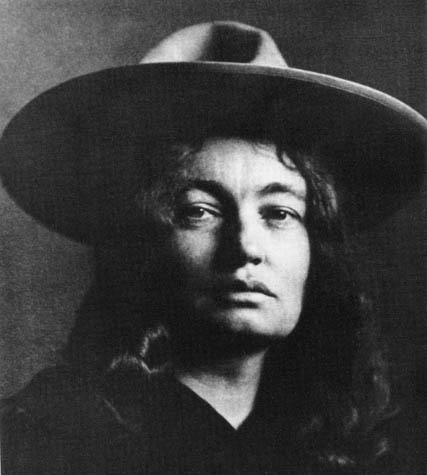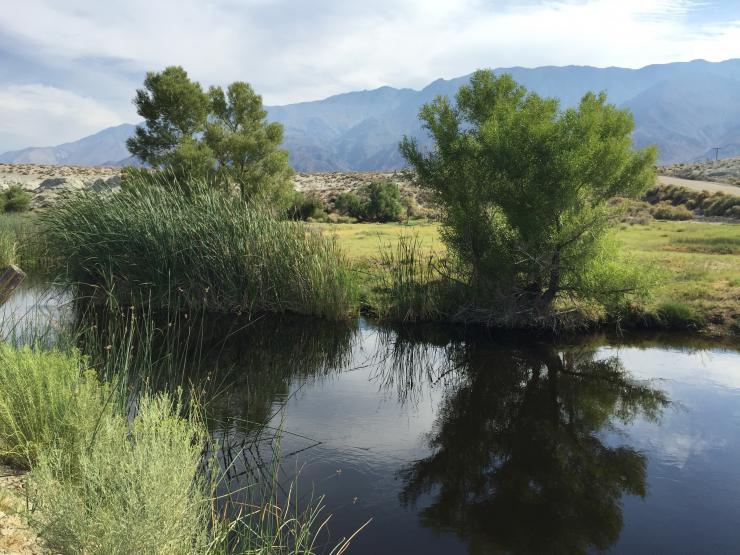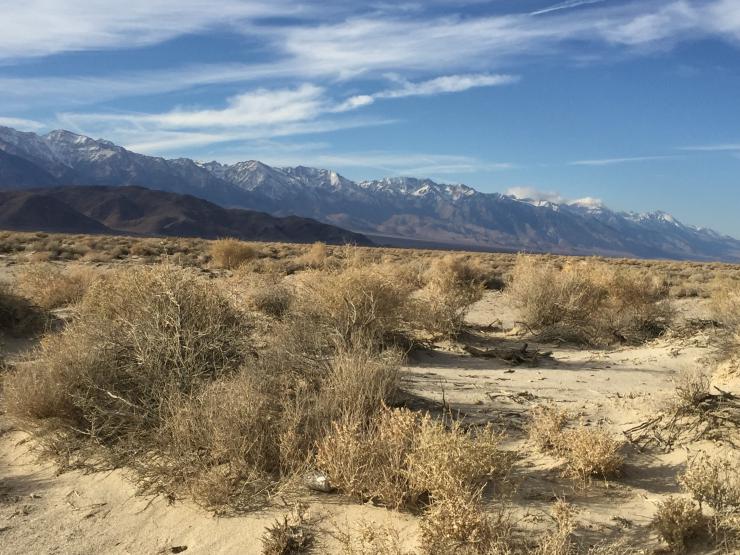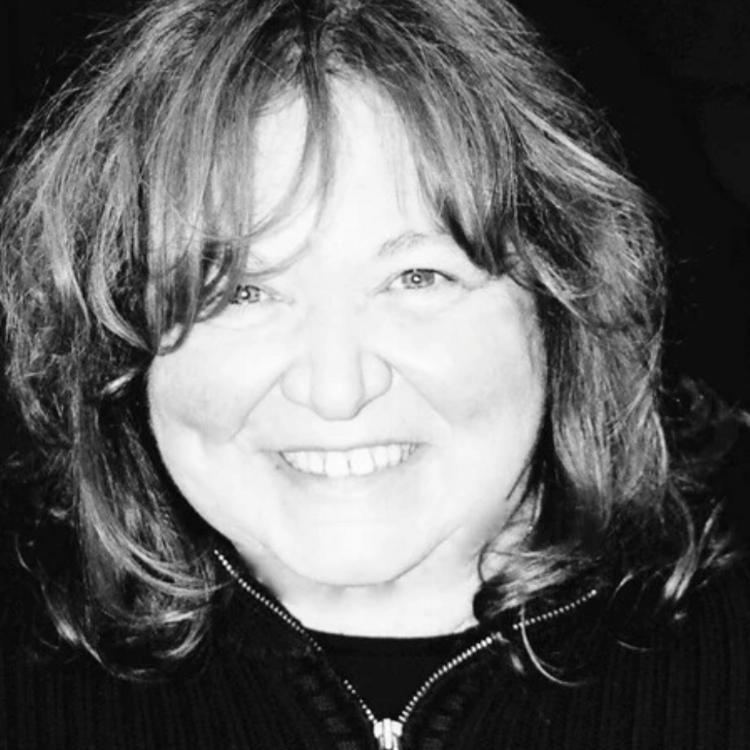The Journey to an Eco-Play
This week on HowlRound, we continue our exploration of Theatre in the Age of Climate Change as part of Climate Week NYC (Use #CWNYC). With the recently signed Paris Agreement, the next several decades will see increased efforts from the global community to address the challenges brought on by a warming planet. How do we, theatre artists, participate in those efforts? How do we use our creativity and skills to bring about the kind of social change that is so desperately needed? Paula Cizmar has written a wonderful play that pushes the conversation about climate change beyond the usual believers versus deniers in order to explore more complex ethical territory. In this essay, she talks about her process for getting there. —Chantal Bilodeau.
When I started to think about writing a play about climate change, a comment made by a philosopher-scientist struck me with such blunt emotional force that I got the shivers: “These are things that we can easily put out of our mind. And so we do.”
And so we do. We have no difficulty noticing the day-to-day hate speech that fills the news, or social injustice, or the madness of out-of-control gun policies; it’s hard to avoid the micro-aggressions and violent acts directed against women or people of color or migrants just struggling to survive. But a catastrophe that is only going to have full impact in the future? How do we respond to that? When is the future? Who can see a polar ice cap melting? Who can see a river disappearing? Or a species of bird that suddenly just fails to show up one year? Who does this matter to anyway?
And is any of this something that should be/could be in a play? This was the brain-swirl as I thought about writing plays set in the American West. Because it occurred to me: Well, here in California, we actually can see a river disappear. We can note that butterflies aren’t returning to their favorite nesting spot, or the wetlands of the Pacific Flyway are drying up and fewer migrating birds can make their way. For playwrights—not that we’re ghouls—our storytelling often thrives on doom, and in the arena of climate change, there is plenty of doom to go around.
Still, as counterpoint, while beginning to write an eco-play, I was introduced to the teachings of the Deep Ecology movement, led by Arne Naess in the 1970s and making a resurgence now. Naess pointed out that to use scare tactics, to operate from a place of fear and humiliation, never really has a lasting impression on people, especially in the area of the environment. The fear/shame tactic isn’t solution-related—it just provokes a quick knee-jerk reaction, but does it truly drive anyone to make any kind of transformative change? Naess believed it was better to operate from a place of joyful action.

Dig a bit at an ancient site and whole underground civilizations are revealed. Start off with one idea, peer under a rock, and discover a whole new perspective that challenges what you thought was right in the first place.
The process of digging into an eco-theatre play is so complex. There’s the geography, the people, the recent and ancient history, the science of it, public policy, nature itself, the artists who have travelled this road before, the ongoing investigations and new revelations. I have likened writing an eco-play in the past to going down a rabbit hole. But it’s so much more than that. Dig a bit at an ancient site and whole underground civilizations are revealed. Start off with one idea, peer under a rock, and discover a whole new perspective that challenges what you thought was right in the first place.
That’s what happened with my play The Chisera (AKA Lost Borders). It started off as a piece inspired by a woman naturalist. But that led to whole new ways of looking. It should come as no shock that I believe we must all be united and work together to save this planet, and I believe in renewable energy. And of course, I am opposed to the wasting of resources. Living in the drought-stricken American West, I am particularly sensitive to water issues. (Which is a whole other can of worms, by the way, and pardon the mixed metaphors, but I invite everyone on the planet to write about water, because it affects everything. It intersects with power, economics, politics, of course; but it also affects issues of race, immigration, gender equality, human rights, etc.)

The play had always begun with my love of the Owens Valley in California and my love of Mary Hunter Austin, an early-twentieth-century nature writer ahead of her time. The Owens Valley is one of those places on this planet that make you feel the deep mystery of being alive. How to describe it? Snowcapped, rugged peaks on one side. Lower, redder, smoother peaks on the other. And in the middle, a high plateau—not very wide—with a small river winding through it and a canopy of blue overhead. But it’s not merely geography that makes it so special: It’s the pervasive feeling that this place was here for eons, that you can feel a deep connection to the thousands of people who loved it for centuries, and that it is one of those places where you can sense the presence of some deeply alive spirit. Mary Austin loved it. Writing in the early 1900s in the Eastern Sierra, she was one of the few people who truly understood the region—the mountains, the river valley, and the desert—in a holistic way. She understood it the way the native Paiutes understood it, because unlike many white settlers, she actually talked to them. Learned from them.
Here’s what set me off in the first place:
East away from the Sierras, south from Panamint and Amargosa, east and south many an uncounted mile, is the Country of Lost Borders… Ute, Paiute, Mojave, and Shoshone inhabit its frontiers, and as far into the heart of it as a man dare go. Not the law, but the land sets the limit… This is the nature of that country. There are hills, rounded, blunt, burned, and squeezed up out of chaos, chrome and vermillion painted, aspiring to the snow-line…Here are the long heavy winds or breathless calms on the tilted mesas where dust devils dance, whirling up in a wide, pale sky. Here you have no rain when all the earth cries for it, or quick outbursts called down-pours for violence. A land of lost rivers, with little in it to love; yet a land that once visited must be come back to inevitably. If it were not so, there would be little told of it. —Mary Hunter Austin, Land of Little Rain

This was a starting point—but I always knew that I didn’t want to write a historical play. Somehow I wanted there to be a story told from the present point-of-view, too. I needed a character who could mirror the past in her actions. Or even a character who would be happy ignoring the borders of time and space. The past figures into every inch of the American West, and I wanted somehow to tap into how we, in the present, owe a debt to those in the past from whom we took something valuable—so that we can figure out how to not repeat these mistakes in the future.
The Owens Valley is one of those past/present/future places: It’s where the Water Wars were fought in the early twentieth century—small bands of citizens versus the Department of Water and Power—and it’s where, since 1913, a significant portion of the water for the city of Los Angeles has been taken. Some would say stolen. I usually do.
So the play started to evolve with all my various personal requirements (strong roles for women, the landscape, the language reflecting the geography, past and present interwoven, characters who drive the piece and make change)—and it also started to take on an ethical quandary: How do you build something that will cause someone or something to grow while at the same time do no harm to others? There are hundreds of these stories: Reroute a river to prevent flooding and an endangered fish loses its spawning grounds. Build a dam in a wilderness area to light up an urban area downstream and lives upstream are changed and a culture is lost. And in the case of many places in the US, the culture that is lost is that of the people who were here first. In the Owens Valley, a large portion of the people who lost out were the Paiutes.

But I didn’t want the play to be a polemic. I wanted it to be personal, with flesh and blood characters. And I wanted to hear directly from the people who still battle the Los Angeles Department of Water and Power today. So I headed once again to the Owens Valley—really, it doesn’t take much of an excuse for me to go there—and was fortunate to be offered friendship and rock solid information from members of the Lone Pine Paiute Shoshone Reservation’s environmental office: Mel Joseph, Jeremiah Joseph, and April Zrelack. Ideas, ideas, and more ideas—and images of what the place once was, what it is now, what it could be; ideas about how everything intersects.
The interconnectivity of it all is staggering. Economics. Politics. Race. And the land itself. It is not possible to alter one teeny portion of the environment without inflicting consequences on another. Often, the place from where we propose to take a resource—or build a questionable structure—is suffering from job loss and poverty, and has been for a long time. Why else would a community accept a new toxic waste storage facility, for example? These types of institutions create jobs—and that is what the community is desperate for and ends up accepting.
But I wanted to go beyond the simple, clear-cut binary of People = Good, Power = Bad. There needed to be a struggle, a choice that was difficult. I learned from my Paiute advisers that a solar plant was proposed for the area—and my “I-love-renewable-energy” mind was immediately excited. The present-tense portion of the story, I thought, could be a scientist doing an environmental impact study for a new solar plant. Great! Solar = Good. Except, as I kept listening to the people of the tribe, I began to wonder: Is that equation accurate? With renewable energy like solar, we get cleaner air, less dependence on burning carbon; we avoid the problems of nuclear waste, we can harness the truly natural, renewable resources the planet provides and go green. Go clean. Except. Where does the solar plant get built? Do we put it in the backyard of a wealthy neighborhood? And what exactly is industrial solar?

That’s what all of eco-theatre looks at. How do we live in this world ethically? How do we love this earth and explore the wilderness areas without turning them into theme parks? How do we turn on the tap and watch water flow out without thinking of who is really paying the price for it?
In The Chisera, that’s the problem that comes up: The Owens Valley, a hundred years after the first lost environmental war, is now faced with another potential for harm: an immense industrial solar plant—the kind, I learned, that would not only cause massive destruction of habitat in its construction, but would also burn major amounts of natural gas to fire it up every day. And it is to be built on land sacred to the Paiutes. To provide power for a city 200 miles away. The question becomes: Will it do no harm? Is it really green? Is it really clean? Or are those convenient sales pitch buzzwords that jumbo power companies use to rationalize coming in once again and exploiting an area?
All of this was tremendously complicated for me emotionally, because I don’t just love wild rivers and jagged rocks and the strange wonderful beauty of deserts and its creatures. I also love cities, places to come together and communicate, places to socialize, places that truly do celebrate the awe-inspiring accomplishments of humankind. And I’m not a Los Angeles hater; it’s one of the most diverse cities on the planet with new immigrants arriving every day and over 150 languages spoken, and who wouldn’t want to be a part of that? In the desert, I can take in the vastness of this world. In the mountains, I can look at the sheer rugged beauty and fearsomeness of the landscape. At the ocean’s edge, I can meditate on the depths of the human spirit and our connection to nature. But in the city, I can be inspired by the sheer audacity of humanity’s ability to evolve, grow, build, startle, expand, achieve, dream. No good/bad, no love/hate. Just a lot of wondering and wonder.
That’s what The Chisera takes on. I think that’s what all of eco-theatre looks at. How do we live in this world ethically? How do we love this earth and explore the wilderness areas without turning them into theme parks? How do we turn on the tap and watch water flow out without thinking of who is really paying the price for it?
And what do we do to make it all fair?









Comments
The article is just the start of the conversation—we want to know what you think about this subject, too! HowlRound is a space for knowledge-sharing, and we welcome spirited, thoughtful, and on-topic dialogue. Find our full comments policy here
"The Owens Valley is one of those past/present/future places: It’s where
the Water Wars were fought in the early twentieth century—small bands of
citizens versus the Department of Water and Power—and it’s where, since
1913, a significant portion of the water for the city of Los Angeles
has been taken. Some would say stolen. I usually do."
Wasn't this (along with incest) the basis of the famous movie "Chinatown"? If so, then I guess Robert Towne may have been one of the first Eco-screenwriters.
Fascinating essay on the process of writing a play and thinking about the environment and the human needs in a complex way. Thanks for bringing attention to Mary Hunter Austin too! Can't wait to read your play.
Thank you for sharing information on this vitally important topic in a fascinating interview. What a wonderful platform to bring this subject to the public: through the power of the arts.